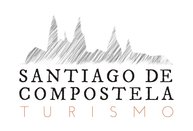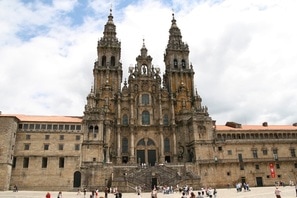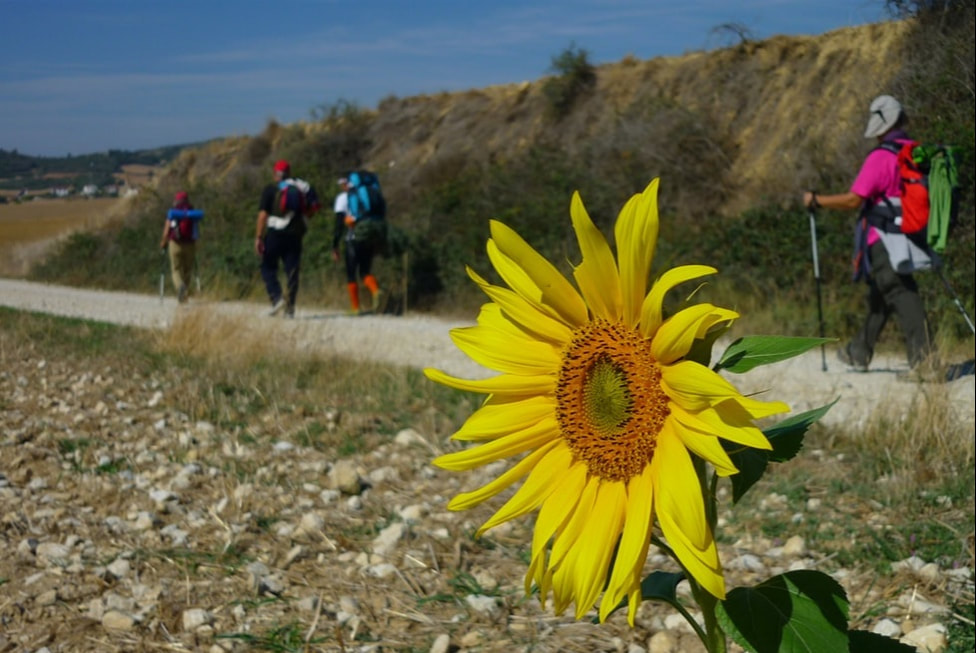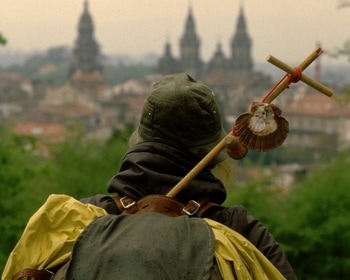EUROPEAN GREEN PILGRIMAGE NETWORK
Santiago de CompostelaSantiago de Compostela is one of the three important pilgrimage cities of Christianity, alongside Jerusalem and Rome. The end point of the pilgrimage to Santiago is the tomb of an Apostle – St James or Santiago – one of the 12 who were part of Christ's intimate circle.
Santiago, in Galicia in northwestern Spain, is at the heart of a web of ancient pilgrim ways criss-crossing Europe, known collectively as the Camino. The most famous of them is the Way of St James; a UNESCO World Heritage Site that is one of the oldest and most important Christian pilgrimage routes. However, all the routes culminate on the shrine of St James, whose relics are housed in the Cathedral of Santiago de Compostela. In 2015, 215,000 pilgrims of 115 different nationalities arrived at Santiago de Compostela, having travelled at least the last 100km on foot or horseback, or the last 200km by bicycle. In 2017 Xunta de Galacia, the executive body of the autonomous region of Galacia, and the City of Santiago de Compostela joined the European |
Xunta de Galacia
|
History of the Camino
Rediscovery of St James's tombThe history of the Camino goes back to the start of the 9th century, when St James's tomb was rediscovered. James, brother of John (possibly the Evangelist), was buried in Santiago after being beheaded in Jerusalem in 44AD. Santiago Cathedral became a key medieval pilgrimage destination.
|
Huge revival of interestThe Camino fell in popularity over subsequent centuries but was rediscovered at the end of the 19th century. The last 30 years have seen an extraordinary revival of interest in the pilgrimage and it is claimed that there are even more pilgrims today than there were in the Middle Ages.
|
World Heritage SiteOne of the routes, the Camino Francés, was declared the first European Cultural Route by the Council of Europe in October 1987. The Camino de Santiago (Way of St James) was inscribed as one of UNESCO’s designated World Heritage Sites in 1993.
|
The scallop shell and the Camino
|
The scallop shell is an iconic image of the Camino, dating back hundreds of years, and today is used, together with a yellow arrow, as a signpost to point travellers in the right direction.
The scallop shell is native to the Galicia region. In medieval times, pilgrims would tie a scallop shell to their staff, hats or cloaks as a symbol of pilgrimage, or bring back scallop shells to prove they had been to Santiago de Compostela. Scallop shells were also used for eating and a scallop shell scoop was the measure for the food that pilgrims were given by churches and other establishments. |
Getting the CompostelaThe Compostela is the accreditation of the pilgrimage to the Tomb of St James. To get the Compostela you must:
|
The Pilgrim's PrayerSaint James, Apostle, chosen |
With thanks to Creative Commons photographers. Picture credits, from top, left to right: Walking the Camino by Joan Grifols; Cathedral of Santiago
de Compostela, by Bernt Rostad; Camino sunflower, by Joan Grifols; Camino, by Joan Grifols; pilgrim and shell, from ARC.
de Compostela, by Bernt Rostad; Camino sunflower, by Joan Grifols; Camino, by Joan Grifols; pilgrim and shell, from ARC.





